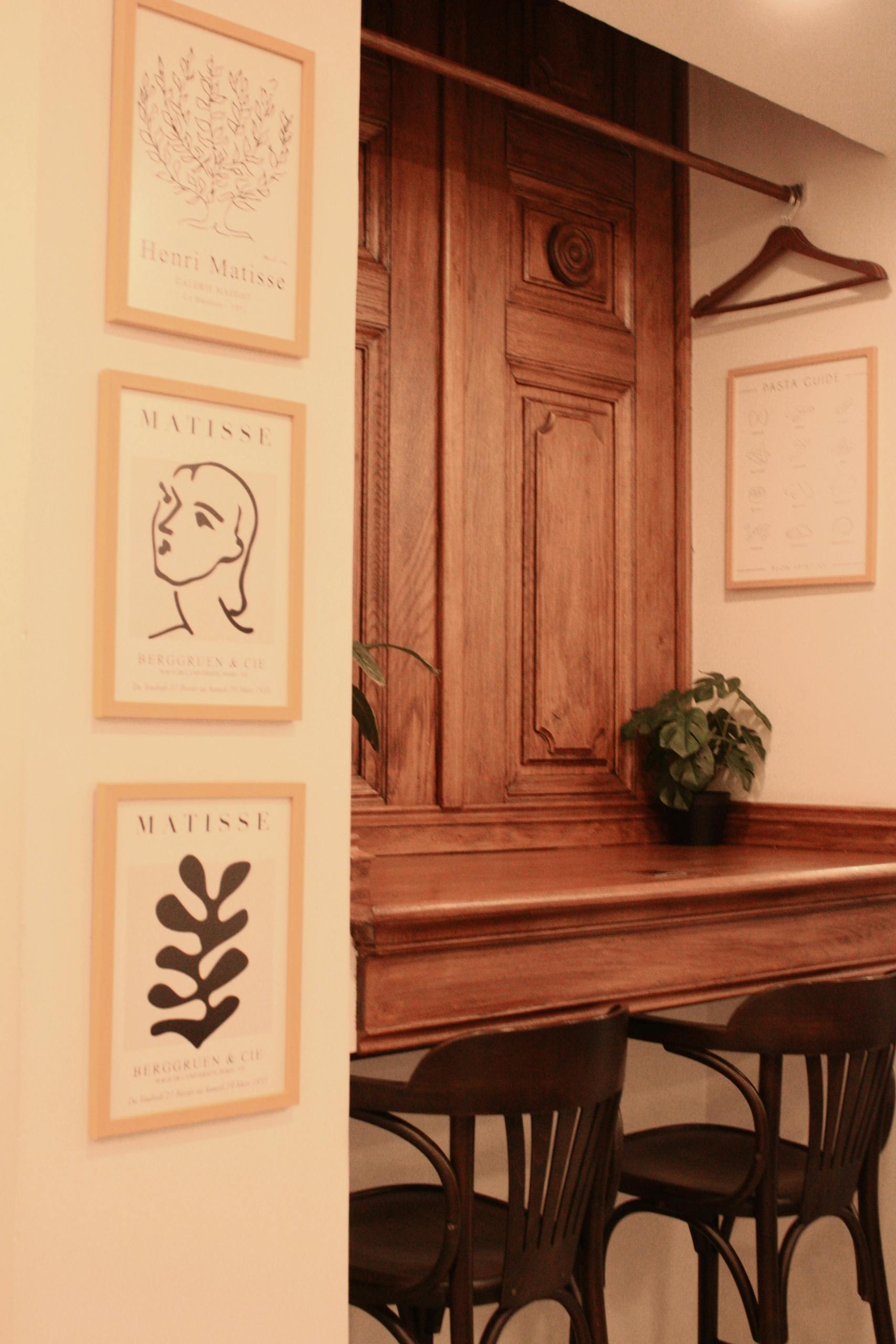Exploring the Tate Modern: A Closer Look at Henri Matisse’s The Snail (1953) and Jacqueline Humphries’ ~?j.h% (2018)
The Tate Modern continues to be a vibrant hub for contemporary and classical art, offering visitors a unique opportunity to engage with masterpieces across various eras and styles. Among the current exhibitions, a noteworthy pairing draws attention: Henri Matisse’s renowned paper cut-out artwork The Snail (1953) and the contemporary piece ~?j.h% by Jacqueline Humphries (2018).
A Fascinating Artistic Encounter in the Same Space
What makes this pairing particularly intriguing is not merely the coexistence of these works but their placement within the same room—specifically, the Level 2 East Room 12 of the Natalie Bell Building. Despite their proximity, there appears to be a surprising lack of photographic documentation capturing both works together in a single frame.
The Significance of the Works
Henri Matisse’s The Snail is an iconic piece from his later period, exemplifying his mastery of cut-outs and bold compositions. It reflects his innovative approach to form and color, influencing generations of artists and viewers alike.
Jacqueline Humphries’ ~?j.h% (2018), on the other hand, epitomizes contemporary abstraction, blending digital influences with traditional painting techniques, and exploring the relationship between color, form, and perception.
A Call to Visitors and Art Enthusiasts
If you happen to be visiting the Tate Modern soon and have the opportunity to photograph this particular room, sharing an image that captures both artworks together would be immensely valuable for the art community. Such visual documentation not only enhances appreciation but also aids scholars and enthusiasts who are unable to view the pieces in person.
Conclusion
The juxtaposition of Matisse’s classic The Snail with Humphries’ contemporary piece reflects the museum’s commitment to showcasing a diverse spectrum of artistic expression. As exhibitions evolve and artworks move within galleries, capturing these moments enriches the collective appreciation of art in its myriad forms.
If you’re planning your visit, keep an eye out for this remarkable pairing and consider contributing to the documentation by sharing your photographs. Art, after all, is best experienced—and remembered—through collective engagement.


As a London resident and avid art enthusiast, I truly appreciate the insightful exploration of these two remarkable works at Tate Modern.
The juxtaposition of Matisse’s The Snail with Jacqueline Humphries’ ~?j.h% exemplifies how contemporary and classical art can coexist within the same space, offering viewers a rich dialogue across eras.
It’s fascinating to consider how Matisse’s innovative cut-outs from the 1950s continue to influence contemporary artists like Humphries, whose work engages with digital influences and abstraction. This kind of pairing not only enhances our understanding of artistic evolution but also underscores the importance of curatorial choices in inspiring reflection and discussion.
I hope more visitors take the chance to observe these works closely, and perhaps even share their photographs or insights—every contribution enriches our collective appreciation of art’s diverse forms.
Insight from a London Resident on the Tate Modern Exhibition
As a frequent visitor to the Tate Modern, I appreciate the thoughtful pairing of Henri Matisse’s The Snail with Jacqueline Humphries’ ~?j.h%. It beautifully exemplifies the museum’s dedication to showcasing both historic mastery and contemporary innovation within the same space, fostering a dialogue across eras.
This juxtaposition invites us to consider how abstract forms and vibrant colors transcend time—Matisse’s bold cut-outs revolutionized modern art, while Humphries’ digital-infused abstraction reflects current technological influences. Observing these works side-by-side deepens our understanding of how artistic expression evolves yet remains interconnected through fundamental explorations of form, color, and perception.
For fellow Londoners and visitors, I’d encourage sharing photographs of this pairing—visual documentation like this not only enriches our collective memory but also supports ongoing art scholarship, especially for those unable to access the exhibition in person. It’s inspiring to see how our city’s museums continue to be a nexus for dialogue, discovery, and community engagement across generations of art lovers.